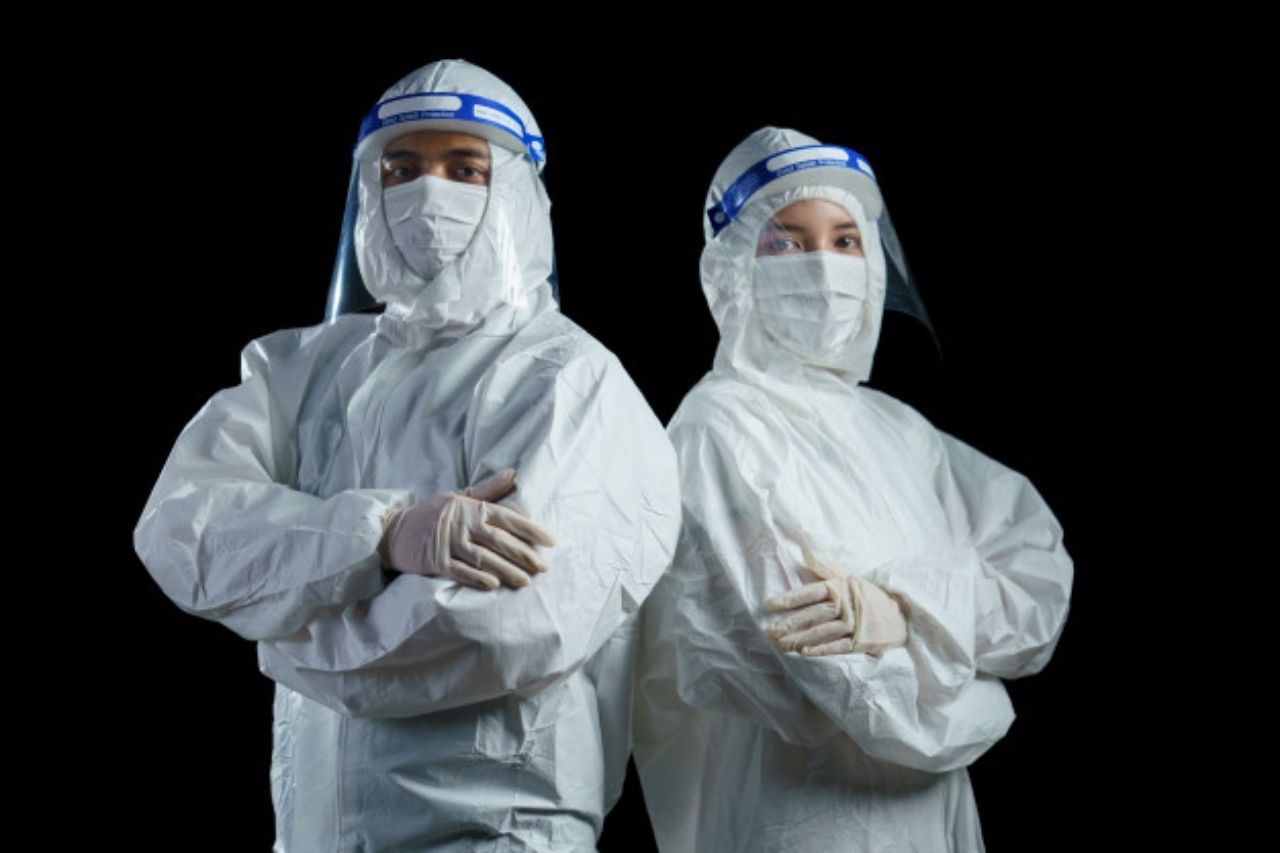
To give frontliners the protection they deserve, you need to find a reputable safety equipment supplier in the Philippines. Because of health hazards in hospitals and clinics, workers are mandated to wear the proper personal protective equipment daily. Through this barrier between employees and patients, exposure to pathogens is reduced—limiting the transmission of diseases inside and outside a building. Keep on reading to learn about the different types of PPE in healthcare!
For numerous reasons, gloves are the most common personal protective equipment you will find in hospitals and clinics. It reduces contamination when working with blood and bodily fluids while also preventing transmission of infectious diseases.
There are three types of gloves used in the healthcare industry:
Surgical gloves are made with sterile materials. This prevents contamination of the surgical area while also keeping the medical team safe. Examination gloves—which could be sterile or non-sterile, are used by various hospital personnel. For chemotherapy staff, gloves that can resist the permeation of harsh medical drugs are required.
Because gloves can become an agent for the transmission of disease, it is removed and disposed of after every use. Even though it offers ample protection to the skin, handwashing is still recommended after removal.

Aside from the hands, the body is also exposed to a wide array of pathogens in a healthcare facility—both inside and outside the surgical room. To provide full protection for your body, the gown should fit your torso and arms—most often extending up to the mid-calf. The three types that are commonly used in hospitals are the following:
Non-surgical gowns are worn in low-risk patient isolation areas. Surgical gowns can be used in standard hospital care, intensive care, emergency room procedures, and infectious control areas. Lastly, surgical isolation gowns are utilized in medium to high-risk areas.
In high-risk environments, medical coveralls are utilized because of the 360-degree protection they offer. Compared to a gown, this body wear covers the lower legs, the back, and sometimes the head and feet.
Other than the large droplets of fluid that can be seen by the eye, there are also smaller particles of viruses and bacteria that can travel in the air. Depending on the hazards, the device used may vary:
Surgical masks are a loose-fitting single-use device that covers the mouth and the nose. When worn properly, it can protect the wearer from large droplets, sprays, and splatters from patients. For protection against smaller particles, N95 respirators may be used. Designed to fit your face, these are tested for their 95% efficiency in filtering the air that you breathe— removing viruses and bacteria.
Both elastomeric respirators and PAPRs are reusable devices that offer higher protection for healthcare workers. Similar to the n95, it also requires a fit test to ensure proper blockage of harmful particles.

Aside from the nose and the mouth, infectious agents can also be transmitted through the ocular route—both by touching the face and through bodily fluid splashes. Without appropriate eye protection wear, healthcare workers can contract conjunctivitis, blood-borne viruses, and more.
Because of the space around safety glasses, it doesn’t offer ample protection against infectious agents. That’s why goggles are the most common type of eye protection worn in hospitals and clinics.
With anti-fog coatings, goggles will provide visibility even after being exposed to respiratory droplets. To be effective, it must fit snugly on the eye area. For situations that require splash protection for the rest of the face, wearing a face shield is also recommended.
While face shields are available for public use, PPE made for healthcare use is different. To provide enough protection to the wearer, it must cover the face, eyes, nose, and mouth while extending below the chin and wrapping around the side of the face.
Compared to goggles, this offers skin protection against blood and secretions. When performing procedures with a high risk of respiratory droplets and airborne particles, it is paired with a mask or respirator.
Because of their design, face shields are easy to wear and can be disinfected easily. It doesn’t require any fit testing and workers with facial hair can wear it properly.
Because of the presence of infectious agents in healthcare facilities, medical front liners are constantly exposed to risks every time they go to work. To reduce the safety hazards in these industries, the right types of PPE must be worn. This will depend on the activity that must be performed.
If you’re looking for a supplier of PPE in healthcare, trust only Dels Apparel! They have decades of experience in providing high-quality products to both private and public institutions.